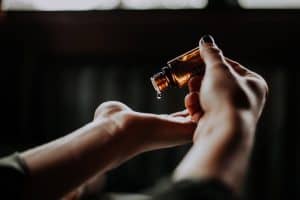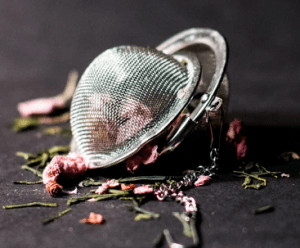Best Natural Remedies For Sunburn: The Complete Breakdown

- Types Of Sunburn Explained
- How Long Does Sunburn Take To Heal?
- How To Keep Sunburn From Peeling
- Essential Oils For Sunburn
- Apple Cider Vinegar For Sunburn
- Coconut Oil For Sunburn
- Vitamin E For Sunburn
- Aloe Vera For Sunburn
- Oatmeal Bath For Sunburn
- Tea Bags For Sunburn
- Cocoa Butter For Sunburn
- Conclusion
When I was younger I was frustrated that my legs never seemed to get tanned, so I thought it’d be a good idea to leave them laying out in the sun while I went boating for a few hours. No need to put on suntan lotion, I figured, since they never got color or sunburn anyway. After all, it wasn’t like I was going to be out all day.
On that day I learned a very important lesson- never leave my skin exposed to the sun for any amount of time without protection. The amount of red that I was at the end of that day was something unnatural. And the pain that I was in was unbearable. So much so that I couldn’t even make my way into the bathtub to soothe my skin. Luckily I at least escaped the fate of my friend who was with me – she started blistering from her burns! And don’t ask about the peeling that we both endured after…
So, have I adequately described the pain and nuisance that is a sunburn? If you’ve ever experienced one yourself, you don’t need anyone to remind you of just how uncomfortable sunburns can be. But what can be done for them? You’re probably used to applying aloe to your burns, but is there anything else that can help as well? Keep on reading to discover the best natural remedies for sunburns.
Types Of Sunburn Explained

The sun can be dangerous if you’re unprotected.
When we get a sunburn, our skin experiences damage from the sun’s UV rays. The people most prone to sunburns are those with fair skin, freckles, blonde or red hair, or blue eyes. Children and elderly individuals are also more sensitive to the sun.
A first-degree sunburn is one that only affects the outer layer of your skin. It will cause mild redness and pain that will fade after a few days.
Those blisters that I mentioned my friend had? Turns out that this is one of the signs of a second-degree burn. These types of burns will cause painful redness. The blisters might even indicate that deeper skin layers, as well as nerve endings, have experienced damage. This type of burn will take longer to heal and go away than a first-degree burn.
There are third and fourth-degree burns that your body can experience, but this typically is not the result of being out in the sun too long.
How Long Does Sunburn Take To Heal?
In your quest of figuring out how to get rid of sunburn, you might be wondering how long does sunburn take to heal. Well, to get started, it might actually take you a few hours to notice that you are sunburnt. When we experience sunburn, it’s a sign that our body has experienced damage and is trying to repair itself. We need to be patient and give it some time to work its magic!
Overall, a first-degree sunburn will fade in about 3-6 days while a second-degree sunburn will take anywhere from a week up to three weeks to heal. For the more severe burns, you might need to consult with a doctor if your skin does not seem to be healing properly.
Typically, the symptoms of your skin feeling hot to the touch, redness, and soreness will worsen a day to a day and a half after the initial sun exposure. The pain you experience from sunburn will start to get worse a few hours after it happens and the peak pain can last up to two days after the burn occurs. That annoying peeling that you might be familiar with after getting sunburnt usually starts 3-8 days after getting the burn.
While after a few weeks tops the sunburn should heal and go away, know that the damage you’re doing to your skin might be more permanent. Every sunburn increases your chances of having skin issues later on, so this isn’t something to mess around with. Less severe repercussions of sun damage include wrinkles and other signs of aging in your skin.
How To Keep Sunburn From Peeling

Woman moisturizing her legs.
Peeling is the body’s way of removing dead and damaged skin cells. It’s overall harmless, but it can be itchy and uncomfortable, and it might also look unpleasant. If you notice your skin starting to peel, resist the urge to pick at or peel off the skin. Let your body do its thing, as otherwise, you might create open wounds that can put you at risk for infection.
But how can you keep a sunburn from peeling in the first place? Applying natural products like aloe vera to a burn can help moisturize and soothe it, consequently slowing or reducing the peeling process. We’ll get to more on this later. Even a general moisturizer will help make the peeling less severe.
It’s not just about moisturizing the outside of your skin to help with peeling, but also about moisturizing from within. So another great way to keep sunburn from peeling is to make sure to drink plenty of water throughout the day. While the classic rule of thumb is to drink 8 cups of water a day, the best thing to do is to listen to your body and how much it needs.
You can also find relief and minimize peeling by taking a cool bath. This can slow or stop the peeling and soothe the pain. If you have blisters from your sunburn, stay away from showers. A shower might cause your blister to pop, which leads to more peeling. Soaps and bath oils in your bath can cause peeling to increase too.
Essential Oils For Sunburn Breakdown

You can use essential oils for sunburn.
Essential oils are among the many options for treating sunburns. These potent oils contain compounds that minimize the symptoms of sunburns and help with healing. As with all healing products that you use, check with a doctor before using essential oils to treat burns.
One essential oil that can help with sunburns is orange essential oil. It can protect against UVA and UVB rays, help inflammatory skin symptoms, boost collagen production (which gives your skin elasticity), and correct pigmentation issues to help protect your skin against UVA rays.
One of the best parts of peppermint essential oil is the menthol it contains. Menthol’s incredible qualities include it being anti-inflammatory, antibacterial, antifungal, antiseptic, and it being a vasoconstrictor. A good peppermint essential oil should contain at least 44% free menthol.
One of the most popular go-to’s is tea tree oil for sunburn. It shares some helpful properties with the essential oils that we already mentioned as well as some new ones. Tea tree essential oil has antibacterial, antiviral, antifungal, immune-boosting, and anti-inflammatory properties.
Lastly, if you’re dealing with a sunburn you can check out lavender essential oil. Lavender plant extracts have many active ingredients that encourage skin regeneration and help with immune function. This oil is antibacterial, antifungal, and anti-inflammatory. These qualities make it useful in minimizing pain, redness, and swelling while also protecting against the chance of getting an infection.
Apple Cider Vinegar For Sunburn: Does Apple Cider Vinegar Help Sunburn?
Apple cider vinegar and sunburn? It might sound a little counterintuitive at first, but it can actually work. Apple cider vinegar has antibacterial and cooling effects, which is why many decide to turn to it for sunburn relief. It helps to reduce inflammation and it has antiseptic qualities as well. Apple cider vinegar’s pectin, a soluble fiber, also helps it minimize inflammation. The vinegar serves to balance out the pH level of sunburned skin and reduce the occurrence of blistering.
If you want to try to use apple cider vinegar on your sunburn, make sure to dilute it first. You can then apply it by putting the mixture into a spray bottle and spraying it onto sunburned skin, taking a cool bath with an apple cider vinegar/water mixture, or dipping a washcloth in vinegar, wringing it out, and gently patting it on the areas experiencing sunburn.
Coconut Oil For Sunburn: Is Coconut Oil Good For Sunburn?

Coconut oil has numerous skin benefits.
Don’t forget about coconut oil when it comes to treating sunburns! Coconut oil is used by many to treat a variety of skin conditions such as dermatitis and eczema. But how can it be good for sunburns? Many feel that coconut oil helps to cool and soothe sunburns and eases symptoms such as itching and peeling. Although science has not proven that coconut oil specifically helps burns, research indicates that using substances high in fats on first-degree burns can improve healing and minimize dryness.
What makes coconut oil so great for sunburns is its high levels of saturated fats. These come in handy for moisturizing your skin, which sunburned skin desperately needs.
Immediately after a sunburn, start treating the area by using a cool compress for 15 minutes. Then take a cool bath to further soothe your skin. When your skin ultimately cools, which can take a few hours, apply the coconut oil to it.
Vitamin E For Sunburn Explained
When it comes to sunburns we don’t want to just treat them, we also want to prevent them. Enter vitamin E oil, one of the many oils for sunburns that we use. Studies suggest that vitamin E can lower the risk of getting sunburns by behaving as an antioxidant, helping to make the outermost layer of your skin thicker, and absorbing UV rays.
Vitamin E essential oil can also help your skin hold onto moisture and minimize inflammation. It, therefore, helps with the peeling issue you might experience after a burn and reducing itchiness. You can use vitamin E oil by rubbing it onto your skin, or you can take a vitamin supplement to enjoy the benefits.
Aloe Vera For Sunburn

Aloe vera leaf.
Growing up, we always kept an aloe plant in our kitchen. In the event that anyone caught their finger or arm on a hot surface, we could just rip a bit of the plant off and enjoy its soothing benefits. (Pro tip: It makes a super thoughtful yet super cheap housewarming present.) Similarly, if you ever experienced a sunburn as a child, chances are that your mom rubbed some aloe gel onto you. What makes aloe such a miracle worker?
Part of what makes the aloe plant so great for treating burns is a compound it contains called aloin. Aloin makes aloe vera anti-inflammatory, exactly what you need after experiencing a burn. And similar to other substances that we’ve talked about, aloe vera will also help hydrate, and consequently repair, your skin.
In order to reap the benefits of the aloe plant for sunburn, you can use the gel directly from inside the leaf and apply it to your skin. Alternatively, you can buy aloe vera extracts to use. You’ll get the most benefits when you use pure aloe vera and when you keep it in a cool place. Apply it a few times a day, give it time to seep into your skin, and you’ll feel near-instant relief.
Oatmeal Bath For Sunburn
People tend to get creative when thinking of natural treatments for everyday problems, and I’m a fan! Take whoever invented oatmeal baths for natural sunburn relief- they deserve an award for innovation!
It turns out that finely ground oatmeal mixed with bathwater can provide you with anti-inflammatory effects. The added bonus of this is that you can easily make this remedy yourself at home. Simply grind up a cup of instant or slow-cooking oatmeal until it reaches a fine consistency. Then just pour it into a lukewarm bath and soak away! The truth is that this technique is quite nifty, but I honestly think it’s a bit easier and less messy to use some of the other methods we’ve discussed for relieving sunburn symptoms.
Tea Bags For Sunburn

Herbal tea infusion.
On the same ‘simple yet genius’ note as oatmeal, yet even simpler and cleaner, is tea bags for sunburns. The tannins in tea (try saying that five times fast) can reduce inflammation, and the theobromine helps remove heat from burns. Furthermore, the catechins in tea prevent and heal skin damage. This is why plenty of people are fans of this technique.
In order to enjoy the benefits of black tea for sunburns, all you need to do is take a few tea bags and seep them in a cup of hot water. Then add ice in order to cool the tea, getting it to a lukewarm temperature. Take the tea bags out of the cup and put them directly on the area of your skin that is burned. You can also pour the tea that’s cooled off over your skin. No matter how much tea you put on your skin, don’t wash it off afterward – leave it there so that your skin soaks in the benefits.
Cocoa Butter For Sunburn Explained
As you’ve surely learned by now, one of the things your skin most needs after being sunburned is hydration. Without this, your skin will become itchy and will take longer to heal. Plus, it will be more prone to peeling, which no one likes.
A natural moisturizer like cocoa butter is a great option. It melts at skin temperature, which lets your skin absorb it easily and quickly. Cocoa butter also has antioxidant properties and is great for soothing sensitive skin.
Simply gently rub it onto the sunburned area and give your skin time to absorb it, and you’ll be on your way to healthier skin.
Conclusion
One thing’s for sure- there’s no fun way to experience a sunburn. And there are even some especially bad ways to experience one. (This brings me back to the time my scalp got burnt and I couldn’t brush my hair for a week…)
Yet with the right tools at your disposal, you can help treat painful and uncomfortable sunburn symptoms or even prevent them in the first place. It’s important to remember to limit your sun exposure and to always use suntan lotion as protection. Yet the best-laid schemes of mice and men, as they say. Sometimes, no matter how hard we try, sunburns happen. In this case, it’s important to know what your skin needs – hydration and a reduction in inflammation – as well as how to get it. This will leave you with healthier skin and an overall healthier you!


